Rare SpaceX rocket failure shows exactly why NASA wants 2 commercial options to fly astronauts to ISS
When you buy through links on our articles, Future and its syndication partners may earn a commission.
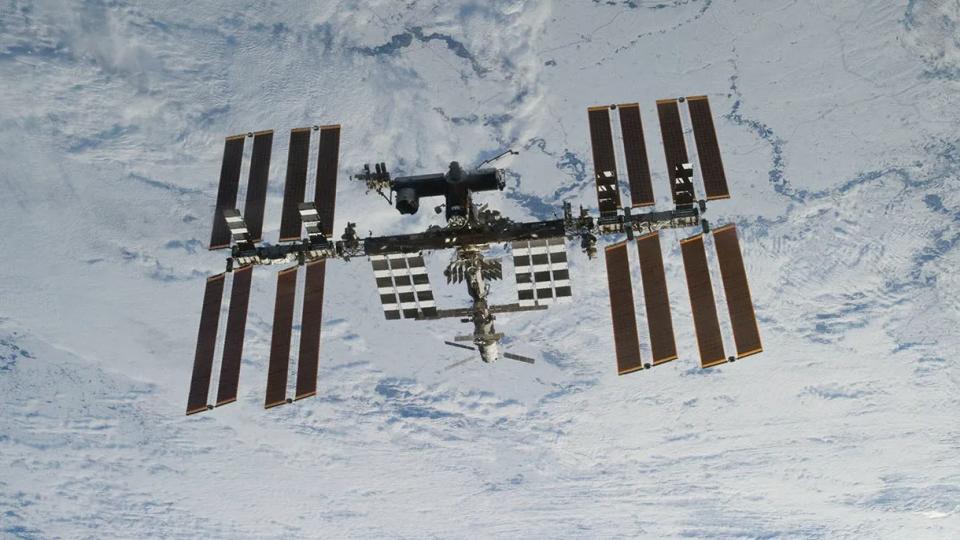
Six years ago, a rare Russian abort during an astronaut launch caused a ripple in human spacecraft schedules. This week, NASA may face the same after a rare failure during a SpaceX launch.
Back in 2018, a Russian Soyuz spacecraft was bound for the International Space Station (ISS) on Oct. 11 when a sensor issue aboard the rocket, also called Soyuz, forced a swift return to Earth. The two astronauts on board were safe, but for several weeks, it was unclear if the usual six-month rotation of ISS crews would be disrupted. (Fortunately, Russia resolved the issue quickly and sent the next crew to space weeks later on Dec. 3, 2018, during a time when Soyuz was the only launch option for ISS.)
NASA officials emphasized in 2018 that the abort showed why we need multiple spacecraft to reach ISS. "This is a very difficult business that we're in, and it can absolutely humble you, and you can't ever lose sight of that," Kenneth Todd, then NASA's operations and integration manager for ISS, told reporters in livestreamed comments hours after the abort.
NASA was working with both SpaceX and Boeing to develop two commercial crew vehicles for the ISS, as Soyuz was the only ride to the space station after the retirement of the agency's space shuttle in 2011. Todd emphasized the agency's focus was not rushing that vehicle development. "We've got to eat this elephant a little bit at a time," he noted.
Now, spacecraft options are once again in the news. To be sure, SpaceX has handily stepped into the role of launching humans since its first Crew Dragon sent a pair of NASA astronauts aloft during a 2020 test mission. But in the wake of a rare Falcon 9 (F9) failure last week during a Starlink satellite launch, SpaceX faces an indefinite delay in launching astronauts as different variants of the same rocket fly satellites and astronauts. SpaceX's rocket issue highlights the ISS consortium's long-running strategy of having multiple spacecraft available.
The company has asked the Federal Aviation Administration (FAA) to make a public safety determination, which would allow them to resume launches if the FAA determines the anomaly did not "jeopardize public safety."
Related: SpaceX Falcon 9 rocket failure forces NASA to evaluate astronaut launch schedule for ISS
"Contingencies can occur," Dana Weigel, now NASA's program manager for ISS, told reporters in a March 22 briefing attended by Space.com at the agency's Johnson Space Center in Houston. And as the space station's life support and water systems depend on "constant throughput" from astronauts to keep working, she noted, keeping ISS occupied is vital for operational safety — aside from the other goals of science return and hosting valuable commercial experiments.
"Today all of our Crew Dragons are launching on F9s," she added. "If there was a problem with F9, for example — and we had to stand down for a while to understand the problem — if we had another vehicle, we could continue flying."
SpaceX's Crew-9 launch with four astronauts was supposed to lift off in mid-August for a half-year ISS mission, relieving the Crew-8 quartet on board since March. NASA said July 12 it's too early to say if Crew-9 or any other mission will be delayed, but emphasized safety is the priority and the agency will evaluate "potential schedule impacts, if any, as more information becomes available."
"Although the SpaceX Starlink launch was a fully commercial mission," the agency added in an e-mailed statement to reporters, "NASA receives insight from SpaceX on all items of interest about the Falcon 9 rocket."
Related: 2 astronaut taxis: Why NASA wants both Boeing's Starliner and SpaceX's Dragon
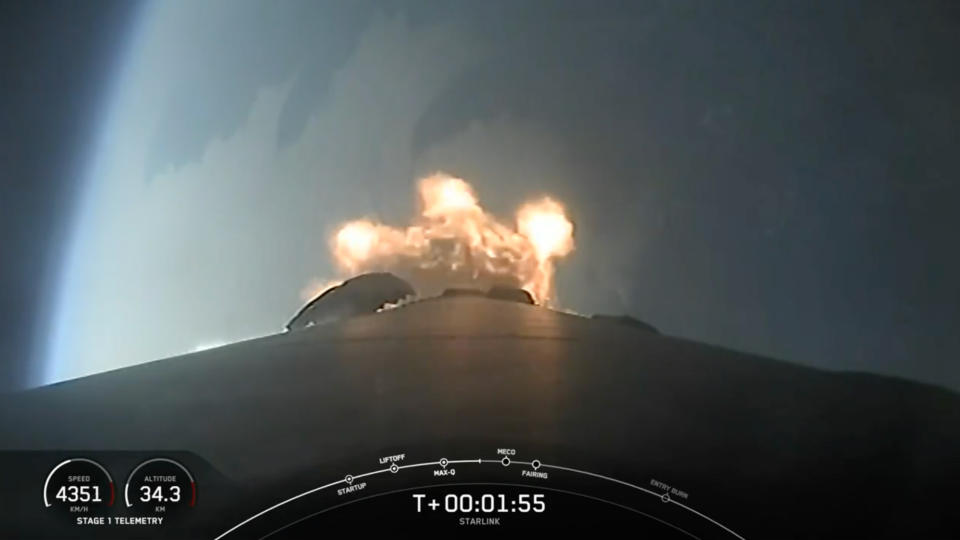
NASA's commercial crew program aims to send astronauts to the ISS on both SpaceX Crew Dragon and Boeing's Starliner. SpaceX is certified to fly operational ISS missions for about half a year each. It has done so eight times without fail since a crew test launch in 2020. It also sent up three shorter Axiom Space ISS commercial astronaut missions and the independently funded Inspiration4 mission to low Earth orbit. The rocket SpaceX uses, F9, is also highly reliable: F9 has sent 364 crewed and uncrewed missions to space with no issues, according to SpaceX figures, with only two major failures in its 14-year launch history.
Starliner is in the middle of a test mission aiming to get certification for its first operational launch, currently set for 2025. Having multiple U.S. spacecraft available to fly to ISS has been a goal since about 2010, and NASA appears to be nearly there. But that depends on whether Starliner is certified for operational work after its current mission, known as Crew Flight Test (CFT).
"This has really been our goal all along, is to have two dissimilar systems," Steve Stich, program manager for NASA's commercial crew program, told reporters in the same March 22 briefing that Weigel attended.
"We've seen in the past the importance, I think, of having this dissimilar redundancy," Stich continued. "It's always tough to fly into space. There's always challenges with every launch vehicle and spacecraft. So for us, having that second transportation system is hugely important."

Boeing and Starliner were downselected from several rounds of competition involving other companies, and received billions of dollars in 2014 for what was then expected to be astronaut launches in 2017. Technical and funding delays pushed that timeline back. SpaceX launched its first astronauts in 2020, basing its crewed design on a highly successful cargo Dragon spacecraft flying since 2012. Now it regularly brings crews to the ISS on six-month missions.
Starliner, a new spacecraft, sent its first crew to space on June 5, 2024 following delays of its own. An uncrewed test in 2019 went awry as computer glitches kept Starliner in the wrong orbit, too far to reach the ISS as planned. Addressing the issues properly during the worst of the pandemic meant Starliner did not get a second try at that mission until 2022. The spacecraft made it to ISS, but thruster issues delayed the docking. Boeing and NASA worked to address those, yet found other problems in 2023: the parachutes carried less load than what was expected, and flammable tape covered much of the wiring. More fixes were therefore put in.
The final push to launch CFT with the two astronauts, former U.S. Navy test pilots Butch Wilmore and Suni Williams, took more effort. All initially appeared on track for a May 6, 2024 launch until United Launch Alliance uncovered a vibrating valve in its Atlas V rocket, which has flown with no failures in more than 80 missions. That valve forced a delay, during which NASA and Boeing uncovered a small helium leak in one thruster of the reaction control system (RCS) for Starliner.
Starliner uses 28 RCS thrusters for maneuvers in orbit; as the other ones remained reliable following extensive testing and computer modeling, NASA approved the launch for June 5. (Some extra time was needed to ensure RCS would work with all re-entry scenarios, as a design vulnerability in the system was also uncovered and had to be addressed before the launch.) Five of the 28 thrusters, however, misbehaved during the critical ISS docking on June 6, forcing a delay before the astronauts safely arrived.
Related: Boeing's Starliner is ready to fly astronauts after years of delay. Here's what took so long.
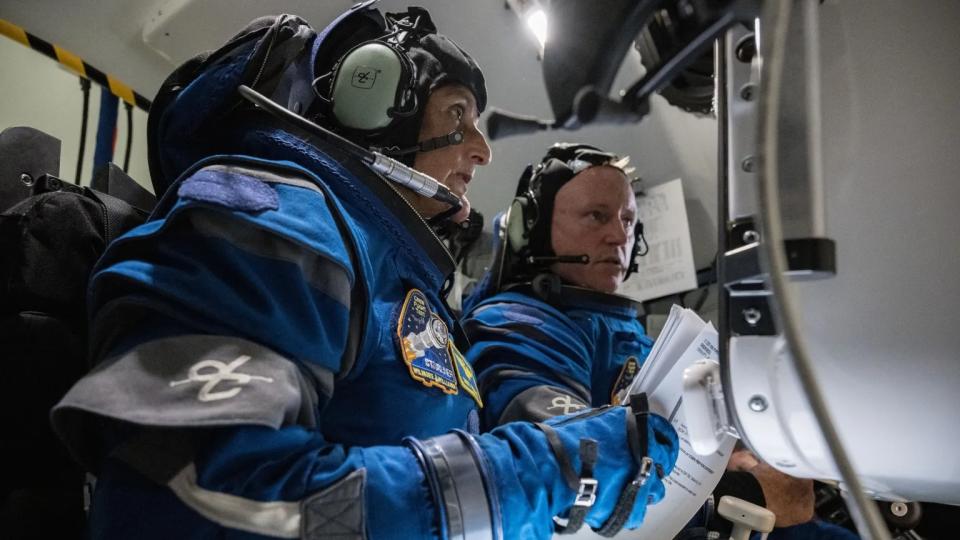
NASA and Boeing have indefinitely extended what was supposed to be a 10-day CFT mission while carefully investigating what happened, which now includes testing thrusters on the ground to see if they can uncover the issue. Starliner remains rated to leave the space station in case of emergency, but engineers want to understand how the RCS system behaves for the operational Starliner missions in the future.
"What we're doing is just taking the time to make sure that we have looked under every rock and every stone, and just to make sure that there's nothing else that would surprise us," Stitch told reporters in a July 12 livestreamed press conference. "That's probably the best way to describe what we're doing, as we take the extra time. It's a test flight, and the first with crew, and we're just taking a little extra time to make sure that we understand everything before we commit to deorbit."
The two CFT astronauts emphasized in their own July 12 press conference from orbit that developmental missions in aerospace, whether for the U.S. Navy or for NASA, always have to have flexibility built into them as issues come up. "This is a test flight, and we were expecting to find some things," Williams said. "We are finding stuff, and we're correcting it, and making updates with our control team."
Wilmore pointed to ongoing ground tests at White Sands Test Facility in New Mexico as a key step in understanding why the thrusters had issues during docking. "We are going to learn from that," he said. "We're going to incorporate new processes and procedures that we will employ, if necessary."
Related: When will Starliner come home? Boeing and NASA still don't know
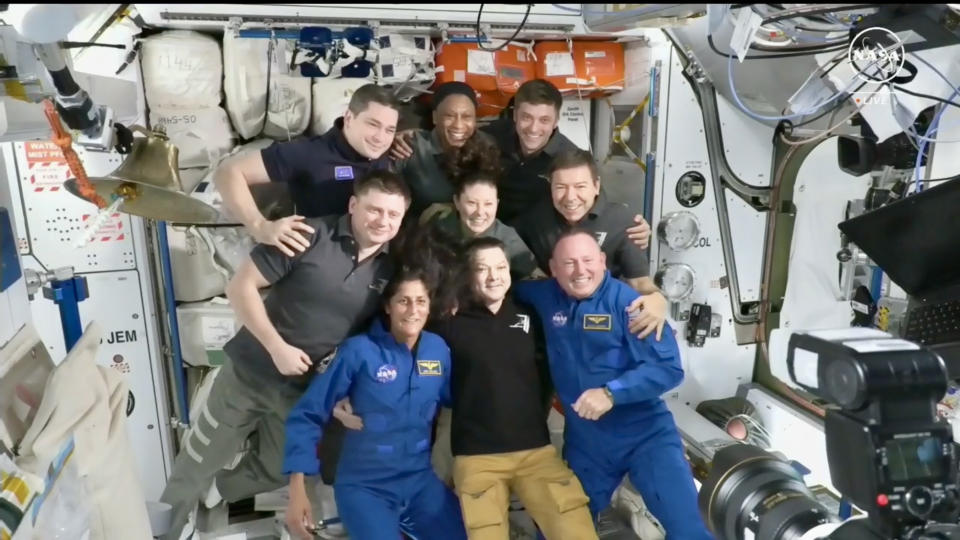
The difficulties that shuttle, Boeing, SpaceX and Soyuz and other space programs have faced launching and landing humans over the decades illustrates a stark reality of space. Even trusted and tested space machinery can fail, sometimes fatally, as both the Soyuz and shuttle experienced.
Soyuz, despite five decades of proven flight heritage, had another recent incident: one spacecraft had a coolant leak in orbit in December 2022. That forced NASA to come up with a contingency plan to get NASA's Frank Rubio home in case of emergency, if a new Soyuz couldn't be ready in time to bring him home as planned. They planned to put him in a temporary seat aboard Crew Dragon, strapped carefully below the four permanent seats in that spacecraft. While that scenario never came to pass, it's another of many examples in which multiple options are handy for astronaut transportation.
Commercial crew's impetus came after one of NASA's most difficult missions. In 2003, the Columbia space shuttle broke up during landing, killing seven astronauts after a piece of falling foam during launch damaged critical tiles used during re-entry. The resulting investigation grounded the space shuttle fleet for more than two years, while the ISS was still under major construction.
Soyuz was used for astronaut launches in the meantime, but the Columbia incident also launched a long-term effort to bring a new spacecraft type to ISS. NASA at first planned to use the Orion spacecraft for ISS launches, but developmental delays brought a pivot to commercial spacecraft instead in 2009. (Orion, following several program changes, is still in progress as the spacecraft for NASA's Artemis program for moon missions.)
Related: Russian Soyuz rocket suffers rare last-minute abort during launch of 3 astronauts to ISS (video)
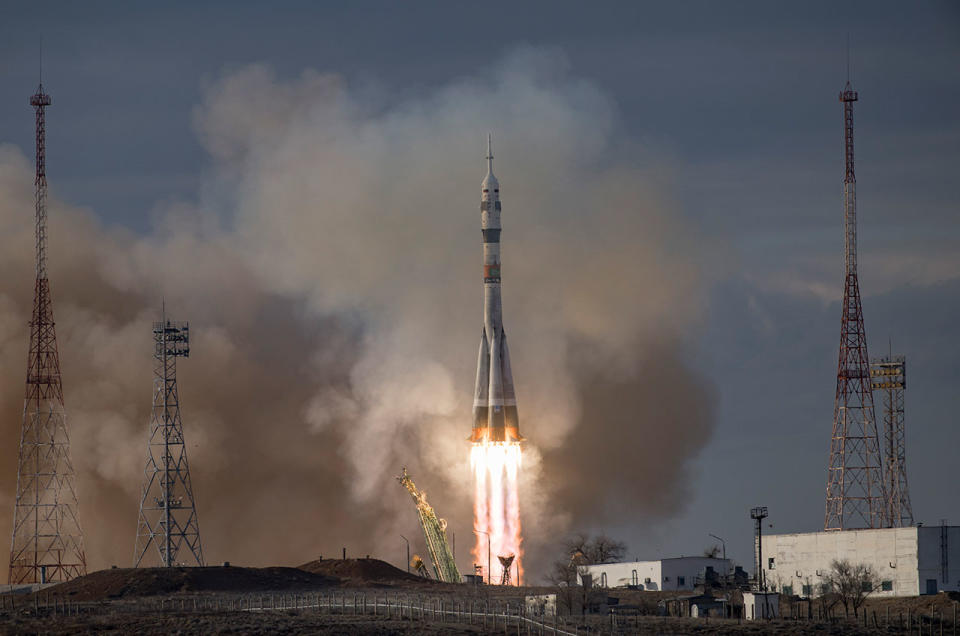
It's possible that SpaceX will resolve its F9 issue quickly, and that Boeing will send its next astronaut mission to space in 2025 as planned. Or as is common in spaceflight, either or both of these commercial crew systems may have to prioritize schedules over safety and put aside the planned next mission, for now.
NASA astronaut Reid Wiseman served as the agency's chief astronaut during the Soyuz abort, including speaking at the postlaunch press conference on that day in October 2018. Wiseman is now commanding a developmental mission of his own, Artemis 2, which aims to bring four humans around the moon no earlier than September 2025. It's the first human lunar mission in at least 53 years.
Artemis 2 was also delayed recently, in part due to long-standing issues with the Orion heat shield that require more investigation. Wiseman and his crewmates have repeatedly said that schedules are never the goal when spacecraft are being used; the emphasis must be on safety, and proceeding only when things are ready.
"The whole purpose of the developmental program, if you cut everything else away, is to go fly. That is what you're trying to do," Wiseman told Space.com at NASA's Kennedy Space Center, nearby Starliner's launch site, hours before the scrubbed May 6 launch attempt of CFT.
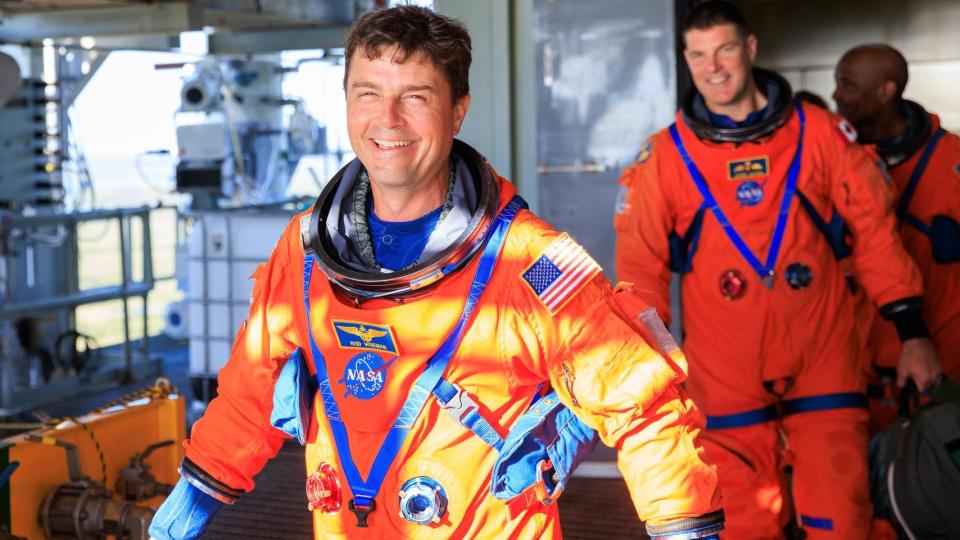
RELATED STORIES:
— SpaceX Falcon 9 rocket suffers failure during Starlink satellite launch (video)
— FAA investigating SpaceX Falcon 9 rocket failure
— SpaceX Falcon 9 rocket suffers rare last-second abort during Starlink satellite launch (video)
"When you build a new vehicle — it doesn't matter how many requirements you set and how many qualification programs you set — when human hands are trying to put together an incredibly complex and powerful machine, it is going to manifest in some issues. And there are going to be things you learn as you go all the way up to launch," Wiseman added, basing his comments on his U.S. Navy test pilot experience prior to joining NASA.
The Artemis 2 commander praised SpaceX's "well-oiled machine" for astronaut launches, but said that the company also went through its own technical issues in getting Crew Dragon to this point. Even then, no one can be complacent.
"After a few vehicles fly, you start to shake those things out," Wiseman said of issues during development. "But I would also say in spaceflight, there is no such thing as routine. I think we've just learned that throughout all of history. There is going to be a curveball, every now and then, that you've got to go tackle, solve, fix, integrate."

